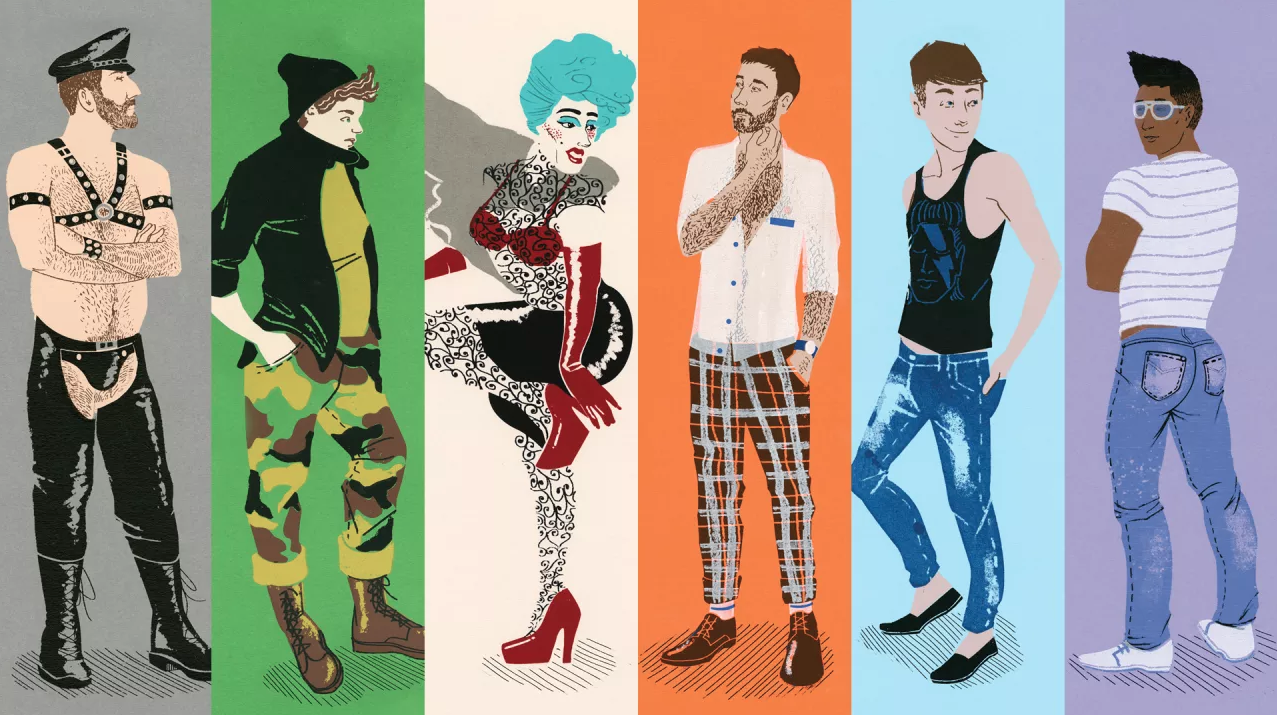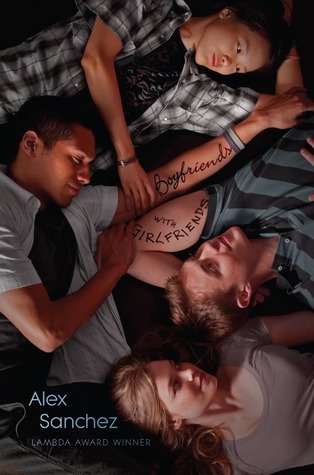Representation
“When we talk about the books in a library, we call them a collection. But to a young reader—especially a teen reader—it’s really more of a representation.” 1

Image sourced from fastcompany.com.
In recent conversations regarding the idea of representation, two common misunderstandings have been brought to my attention: first, a failure to grasp the impact the canon will continue to play in what is taught and read (no one needs to fear that Huckleberry Finn or Of Mice and Men will be removed from the curriculum anytime soon, despite negative depictions of race and disability); and second, a misunderstanding as to what discourses around representation aim to do. In hopes to better understand this discourse, which—contrary to silencing anyone—looks to amplify those voice that are generally under-, un- or misrepresented, this post aims to offer a clearer view of what representation means and how it functions in queer YA novels.
Stephanie R. Logan et al. expand on the previous work of Cart and Jenkins as they frame how representation of queer characters in YA has continued to improve over the last four decades:
YA queer literature has shown a steady progression over the years from texts that perpetuate stereotypes of queer identity and characters “doomed to either a premature death or a life of despair lived at the darkest margins of society” to texts that portray queer characters as “people of various ages, cultures, incomes, and perspectives, as the friends, family, neighbors, and mentors who are part of the social web of connectedness that teens of all sexual orientations navigate on a daily basis” 2
With the entire YA market growing at a rapid pace, progress ought to be expected. As noted by Logan et al., increased representation is being used to describe a number of categories: diversity in terms of race, class, and culture; a wider range of sexual orientations; and more options for the futures of queer characters. Below, The Miseducation of Cameron Post by Emily M. Danforth and The God Box and Boyfriends with Girlfriends, both by Alex Sanchez, are expanded upon in regard to their exemplary portrayals of diverse representation.
The Miseducation of Cameron Post
Emily M. Danforth
In this coming-of-age novel, Cameron learns to accept the idea that she is a lesbian. She does this in the midst of facing adversity from Fundamentalist family members and friends. As Cameron’s struggle is nearly always against religious institutions, this aspect of her narrative is dramatic and compelling, yet it often feels too binaristic and rigid. When Cameron is sent to a religious conversion therapy camp, however, she befriends two other queer teens—Adam and Jane—whose storylines weave into her own and expand the representational reach of this novel dynamically.
Jane is a lesbian with a prosthetic leg. She helps Cameron to plan an escape from the conversion camp and is, ultimately, the leader of their small tribe.
Adam describes himself as “winkte,” a “[t]wo-souls person.”3 Expanding on this lesser known identity marker, Adam explains, “It’s a Lakota word—well, the shorter version of one. Winyanktehca. […] I’m like pre-gender, or almost like a third gender that’s male and female combined” (Danforth 311). In identifying himself this way, Adam uniquely shows how his Native American heritage and his queer identity are woven into one another. His remarks about this layered aspect of his identity then serve to educate both the novel’s protagonists and its readers: “Winktes are supposed to somehow bridge the divide between genders and be healers and spirit people” (Danforth 312).
In many ways, Adam is the most complex and interesting character in the novel. He not only resists the religious doctrines forced upon him at the conversion camp, but also refuses the sexual and gender categories (“gay,” “tranny”) that his fellow campers offer (Danforth 311).
The God Box
Alex Sanchez
Alex Sanchez’s YA novels have been praised by critics, educators, and readers for their representation of queer Mexican-American youth.4 G. Douglas Meyers calls the characters of these books “nuanced and realistic,” and this is certainly the case for the narrator of Sanchez’s The God Box.5. In this novel, Paul/Pablo lays out in the very first chapter all of the identity markers with which he’s struggling: his Mexican-American cultural identity, his Fundamentalist Christian religion, and his gay sexual identity.6 I say that Paul is “struggling” with these various identities because, indeed, the majority of this text finds Paul attempting to navigate how these various markers interact with one another. In the end, Paul has to reevaluate all of these aspects of his identity through the help of Manuel, a new guy at his school who seems to have effectively sorted these same three claims on his identity before the narrative begins.
Perhaps the most compelling aspect of this novel is that Paul is represented as initially very adverse to both his Mexican heritage and his sexual feelings. Whereas The Miseducaton of Cameron Post draws a clear line between religion and sexuality, The God Box does not. Rather, Paul navigates these spaces in a way that mirrors a “redemption” narrative, granting him forgiveness after his first responses of self-hatred were marked by internalized racism and homophobia. Thus, through this novel, Sanchez is able to present not only a view of how heritage and religion can interact with one’s sexual identity, but he additionally offers his readers a rare perspective for YA texts in which a character resists and denies his sexual identity for the majority of the narrative.
Boyfriends with Girlfriends
Alex Sanchez
In Boyfriends with Girlfriends, Sanchez continues to chip away at constructed binaries. Here, he explores bisexuality through two different characters who find themselves constantly challenged by both their heterosexual and homosexual peers. As Lance (who is gay and white) and Sergio (bisexual, Mexican-American) begin to date, their closest friends, Allie (a questioning bisexual, white) and Kimiko (a lesbian, Japanese) also enter upon a relationship. While this novel clearly sets out to better portray bisexual characters (whose representation is extremely limited in YA literature), its efforts are less than discreet. (“[D]o all bi people have open relationships?” Allie asks Kimiko, to which the latter patiently responds in the negative.7
Misrepresentation
While these four novels all mark points of progress in the representation afforded by queer YA novels, many scholars are nevertheless disappointed by recent publications, finding these representations either undeveloped or ineffectual, packed alongside continuing stereotypes.
Regarding the still limited state of representation, Thomas Crisp believes the diversity of queer protagonists is minuscule when compared to what is available for heteronormative representations in YA literature. In illustrating this point, he refers to the recent response of a student in one of the college-level YA courses he teaches. When the student, who identifies as gay, reflected on the readings from the course, he sadly concluded that he was unable to identify with any of the gay protagonists in the queer-themed YA books the class had read. “It’s really great that you’re trying,” he’d said, “but I just don’t see myself here.” 8
Elsewhere, Crisp has noted that these limits seem to be imposed by writers attempting to fit queer characters into a heteronormative plot. He targets Alex Sanchez as one of the writers perpetuating this trend:
[I]t seems that the books [Sanchez’s Rainbow Boys, along with his other works] rely upon stereotypes of what it means to be “male” (i.e., aggressive and dominating) and “female” (i.e. submissive and self-sacrificing) to depict men in homosexual relationships as embodying either a “masculine” or “feminine” counterpart (perpetuating the fallacy that in gay relationships, one partner is the “man” while the other is the “woman”). (Crisp 216)
Expanding on this problematic and misogynistic narrative, Crisp points to an interview in which Sanchez stated that he both “embraced and challenged” stereotypes regarding the representation of queer adolescents in his work. (This approach is evident also in Sanchez’s depiction of bisexual characters in Boyfriends with Girlfriends. While readers are informed that both Lance and Kimiko, who are solely homosexual, are both still virgins, Sanchez’s bisexual characters, Allie and Sergio, are represented as both sexually experienced, to the point of being questionably over-sexed.) While Crisp admired this acknowledgment, he nevertheless concludes that beginning with the goal of embracing some stereotypes (even if not all) will ultimately end negatively (Crisp 228).
Crisp’s call to better representation, however, is often tempered by an additional complaint that many nuanced representations of queer characters come across as “inauthentic” (Crisp 256). Yet, perhaps representation and realism are not so much diametrically opposed as they are poorly navigated. As more queer YA literature is published, increased opportunities for representation will either fill in the gaps, or continued patterns of limited representation will better indicate the limits of these publications. As Crisp and Knezek state, “One text cannot carry the burden of representing a diverse population and our classrooms and bookshelves must reflect a range of LGBTQ identities” (Crisp and Knezek 79).
- Levithan, David. “Supporting Gay Teen Literature: An Advocate Speaks Out For Representation on Library Shelves.” School Library Journal, vol. 55, no. 10, 2004, p. 44. ↩
- Logan, Stephanie R., Terri A. Lasswell, Yolanda Hood, and Dwight C. Watson., “Criteria for the Selection of Young Adult Queer Literature.” The English Journal, vo. 103, no. 5, 2014, pp. 30-41. JSTOR. ↩
- Danforth, Emily M., The Miseducation of Cameron Post. Balzer + Bray, 2012, p. 311. ↩
- Crisp, Thomas, “The Trouble with Rainbow Boys.” Over the Rainbow: Queer Children’s and Young Adult Literature, edited by Michelle Ann Abate and Kenneth Kidd, University of Michigan Press, 2011, pp. 215–256. ↩
- Meyers, G.Douglas, “Alex Sanchez’s Fiction: A Resource for All.” The English Journal, vol. 98, no. 4, 2009, pp. 73–76, p. 73 ↩
- Sanchez, Alex, The God Box. Simon & Schuster, 2007. ↩
- Sanchez, Alex, Boyfriends with Girlfriends. Simon & Schuster, 2011, p. 123. ↩
- Crisp, Thomas and Suzanne M. Knezek, “Challenging Texts: ‘I Just Don’t See Myself Here’: Challenging Conversations about LGBTQ Adolescent Literature.” The English Journal, vol. 99, no. 3, 2010, pp. 76–79, p. 76. ↩

Nice article, keep it up, and keep sharing such articles.推特账号购买
This blog is very wonderful information is very helpful tiktok downloader